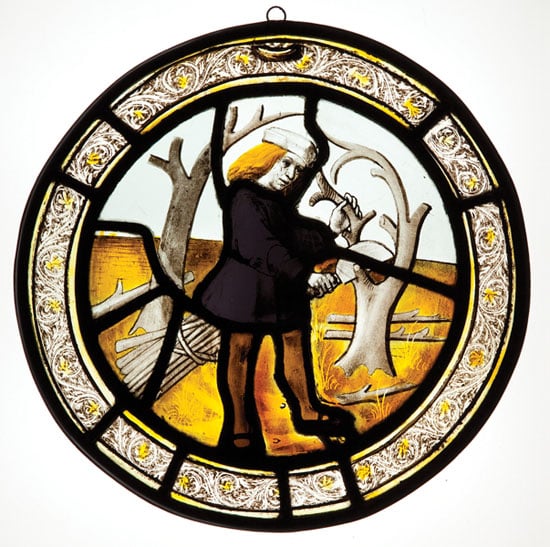Labours of the Months (December/January; March; September; April/November)
John Wattock
- Art Funded
- 2011
- Dimensions
- Diameter: 27.5 - 28.5 cm
- Vendor
- Sam Fogg
Depictions of Labours usually show the central tasks of the agricultural year, such as sowing, reaping, pruning or harvesting. In some instances, however, they are less concerned with work, and include scenes of feasting, sitting by the fire, hawking or courtly love. In this set, March and September show tree pruning and a grape harvest respectively; April/November shows a man rushing into a house to shelter from a storm; and December/January shows a king feasting, featuring a silver-gilt wine cup and standing hourglass salt. Medieval Norwich had one of the most flourishing schools of glass-painting in England, and it has been suggested that the roundels were painted by John Wattock, a local glazier. They demonstrate a sense of humour and familiarity with Flemish art. The roundels were probably made for the house of Thomas Pykerell (d 1545), a Norwich mercer who was three times mayor of the city, but they were later moved to Brandiston Hall, a stately home in Norfolk. These examples of late medieval English secular glass are very rare: most Pre-Reformation English stained glass has been destroyed, and very little survives outside cathedrals and parish churches.
Provenance
Thought to have been installed at Brandiston Hall in the nineteenth century; removed with Listed Building Consent 1985; Sam Fogg, 2011.



